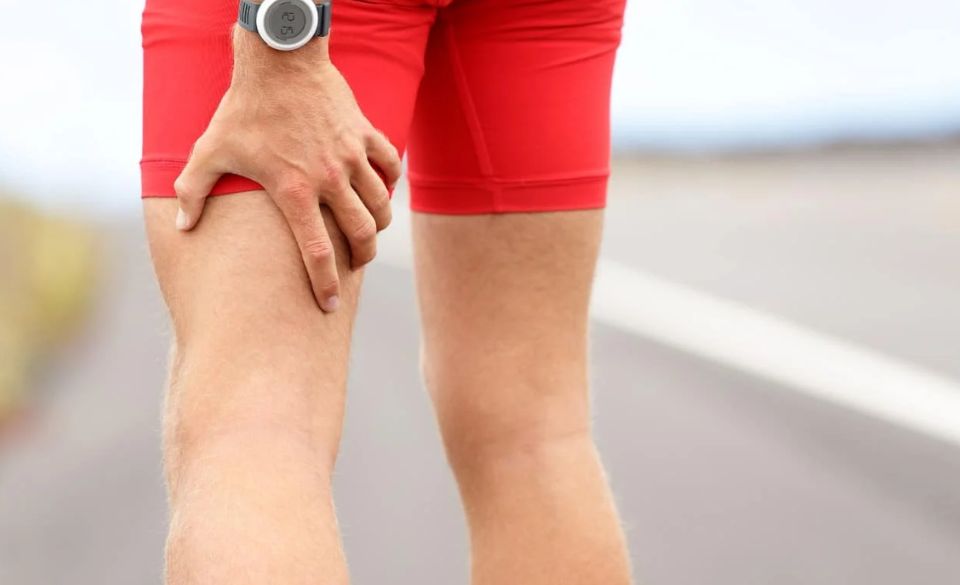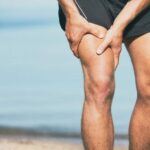
Injury Guide: What Causes Hamstring Pain When Running
Page Contents
Hamstring pain can be a major obstacle when it comes to running. Not only can it be painful, but it can also limit your range of motion and make running uncomfortable or even impossible. The good news is that there are ways to alleviate and prevent hamstring pain when running. Stretching and strengthening the muscles that support the hamstrings, as well as proper warm-up and cool down, can all help reduce or prevent hamstring pain when running. Additionally, knowing the signs and symptoms of hamstring pain and being mindful of your running form can help avoid it. Knowing how to rest, recover, and move your body can also be beneficial in preventing hamstring pain when running. With a few simple steps, you can keep your hamstring pain at bay and enjoy your running more.
What Causes Hamstring Pain When Running
Hamstring pain when running can be caused by a variety of factors. It is important to identify the source of the pain so that it can be correctly treated. The hamstring consists of three muscles located at the back of the thigh – the semimembranosus, semitendinosus and the biceps femoris. These muscles are responsible for hip and knee extension, as well as hip and knee flexion. Pain in this area can be particularly troublesome for runners who rely on these muscles for propulsion.
The most common cause of hamstring pain when running is an imbalance in the hip muscles, which places increased strain on the hamstrings. When the hip flexors and glutes become too strong, the hamstrings become overworked as they try to balance the tension in the leg. This can cause the muscles to become tight or inflamed, leading to pain. Poor core and glute strength can also contribute to hamstring problems. Stabilizing your core and strengthening your glutes can help reduce strain on the hamstrings.
Another potential cause of hamstring pain is a lack of flexibility. Tightness and shortened muscles can lead to pain and increase the risk of injury. It is important to perform regular stretching before and after running to improve the flexibility of the muscles. Additionally, proper warm-up and cool-down activities can help prevent tightness and reduce pain.
In addition, overtraining can lead to hamstring problems. If you are running too much, your muscles may become fatigued, leading to pain. It is important to listen to your body and adjust your training plan accordingly. Make sure to allow yourself adequate rest and recovery periods so that your muscles can repair and become stronger.
Finally, some underlying health conditions can cause hamstring pain. If you are experiencing chronic pain, it is important to speak to your doctor as you may need additional medical attention. Conditions such as sciatica, bursitis and tendinitis can all lead to pain in the hamstring.
In conclusion, there are a variety of factors which can contribute to hamstring pain when running. It is important to identify the source of your pain so that it can be correctly treated. Strengthening your core and glutes, improving your flexibility, and allowing yourself adequate rest and recovery periods can all help to prevent or reduce the severity of hamstring pain. Additionally, if you are experiencing chronic pain, it is important to speak to your doctor.
How To Heal A Hamstring Strain Fast
Hamstring strains are a common injury among athletes and can cause severe pain and discomfort. Luckily, there are several steps that can be taken to quickly and effectively heal a hamstring strain.
The first step in the healing process is to rest the injured area. This means refraining from activities that may aggravate the strain. Ice and compression should also be used to reduce inflammation and swelling. Once the swelling is down, gentle stretching and range of motion exercises can be done to help improve flexibility and mobility.
The next step in the healing process is to use appropriate strengthening exercises. Strengthening the muscles around the strain can help to support the injured area and reduce the risk of further injury. Exercises such as squats and leg curls can be used to help increase the strength of the hamstrings.
Massage therapy can also be beneficial in healing a hamstring strain. Massage can increase circulation and relieve muscle tension, which can help speed up the healing process.
Taking over-the-counter anti-inflammatory medications can also help reduce pain and inflammation. Nonsteroidal anti-inflammatory drugs (NSAIDs) such as ibuprofen can be taken to help reduce swelling and pain.
Physical therapy is an important component of healing a hamstring strain. A physical therapist can help create an exercise program specifically tailored to help improve flexibility, strength, and mobility.
Finally, it is important to wear a brace or compression bandage while exercising and during the healing process. A compression bandage can help keep the hamstrings secure and reduce the risk of further injury.
These are some of the steps that can be taken to help heal a hamstring strain quickly and effectively. Rest, ice and compression, and appropriate strengthening exercises are important components of the healing process, as well as massage therapy, over-the-counter anti-inflammatory medications, and physical therapy. Additionally, a brace or compression bandage should be worn while exercising and during the healing process. By following these steps, athletes can get back on the field faster, and reduce the risk of further injury.
Does Running Technique Affect The Hamstring Muscles
Running technique does affect the hamstring muscles. The hamstrings are located in the back of the thigh and work with the quadriceps to help propel the runner forward. Improper running technique can lead to overworking of the hamstring muscles, resulting in strain or injury.
When running, the knee should be slightly bent, allowing the foot to strike the ground in a controlled and fluid manner. This prevents jarring of the leg muscles and helps to distribute the force of impact evenly. Additionally, the runner’s body should remain upright and the hips should be kept level, allowing the hamstrings to be worked in a coordinated manner with the rest of the leg muscles.
Good running technique also helps prevent over-striding, which causes unnecessary strain on the hamstrings. When over-striding, the foot strike occurs too far ahead of the body, resulting in a jarring of the hamstrings every time the foot strikes the ground.
Finally, adequate stretching of the hamstring muscles before and after running is essential for a healthy running form. This ensures the muscles are relaxed and elastic, allowing the runner to make smoother movements.
In conclusion, running technique does affect the hamstring muscles. Proper technique and adequate stretching are essential for injury prevention and improved performance.


